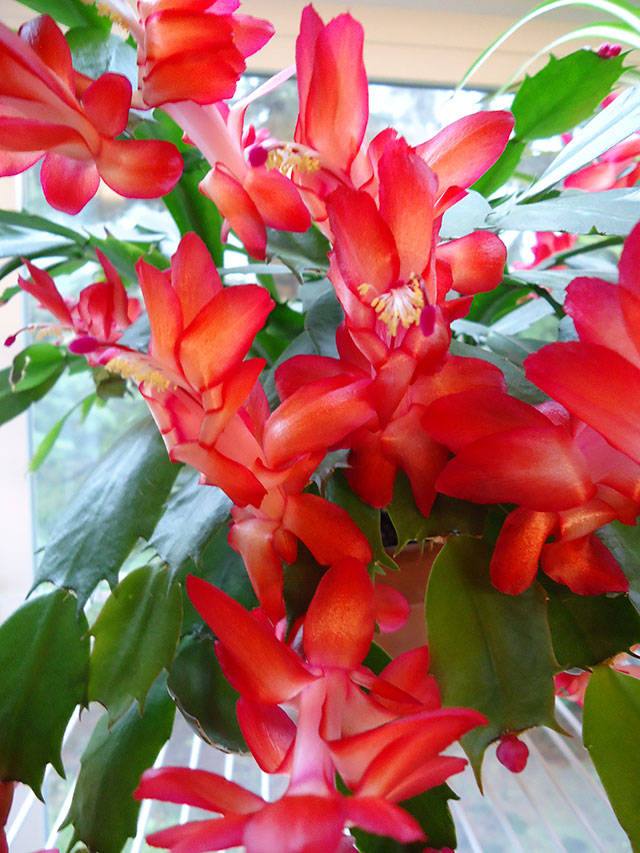Christmas cactuses are a favorite gift plant, known for their abundant brightly colored flowers that emerge in early December and bloom throughout the holidays.
Blooming at this time of year is induced by the onset of short days (or more importantly long nights) and cooler temperatures, conditions reminiscent of the native habitat of Christmas cactuses — the high mountain rain forests of Brazil.
To make sure that your Christmas cactus blooms during the holidays, you are encouraged to stop fertilizing it in early fall, move the plant to a cooler room, and place it in total darkness for 12 hours each night until you see buds forming. This usually takes about six to eight weeks; so starting the process in early to mid-September is likely to result in blooms around Christmas. The need for certain light conditions to induce blooming is called “photoperiodism.”
Many owners of Christmas cactuses report, however, that their Christmas cactus blooms not at Christmas but other times of the year, often as early as October, sometimes in the spring. Some share that they purchased their cactuses in bloom at Christmas but that they have never been able to get them to bloom in December again, even after following the above instructions.
So what’s wrong?
There are actually three types of holiday cactus: Christmas cactus, Thanksgiving cactus and Easter cactus. They look similar but have important differences.
The true Christmas cactus (Schlumbergera bridgesii) has long, pendulous stems that hang down over the edge of the pot in which it is planted. The edges of the flattened stem segments (called cladodes) are scalloped without teeth. The flowers are funnel-shaped and drooping. Christmas cactuses typically bloom in December but are known to bloom again in the spring.
In contrast, the Thanksgiving cactus (S. truncata) has a more upright growth habit. The stems first grow upward and then arch gracefully outward. The edges of the cladodes have distinct teeth, making them look a bit like crab claws. The funnel-shaped flowers are borne horizontally and typically appear in November and occasionally in the spring.
The Easter cactus (Hatiora gaertneri) is in a different genus than the other two holiday cactuses and originates in temperate mountain forests of Brazil which are drier. The plant is small and upright. Stem segments are scalloped with small bristles between the segments and at the tip. The flowers are star shaped. Easter cactuses are known to be harder to raise than Christmas or Thanksgiving cactuses.
Because Christmas cactuses are relatively fragile plants with long pendulous stems, they are easily damaged. They do not ship well, often breaking in transport.
As a result, many producers sell Thanksgiving cactuses in the place of Christmas cactuses. To get them to bloom around Christmas, the producers manipulate the light to delay blooming. The problem is that if you do not reproduce these same conditions in the future, the plant will revert to its normal behavior and bloom before the Christmas holidays.
To make it bloom at Christmas, you will have to keep the plant in warmer temperatures and long days (short nights) well into October which can be burdensome and is not always successful.
Since a holiday cactus is beautiful whenever it blooms, why not let nature take its course? Get all three cactuses and enjoy the blooms, not just Christmas, but other special holidays as well.
Jeanette Stehr-Green is a WSU-certified Clallam County Master Gardener.



